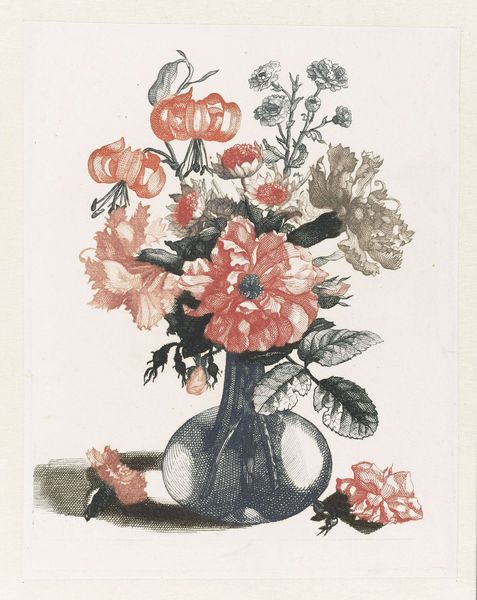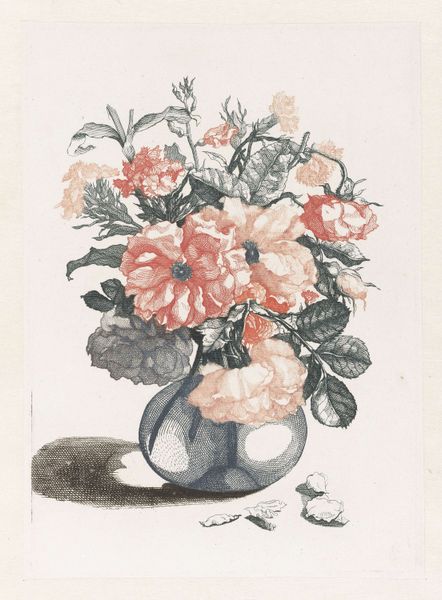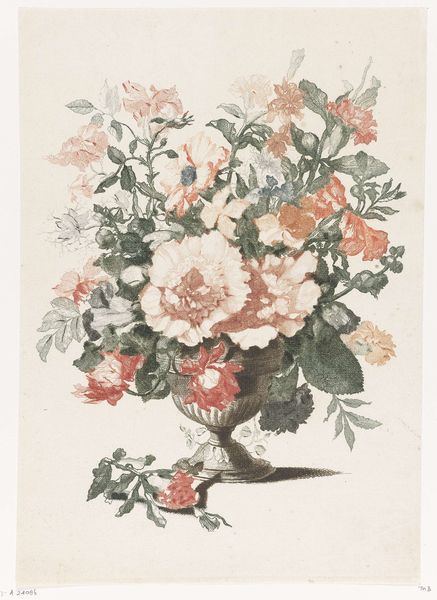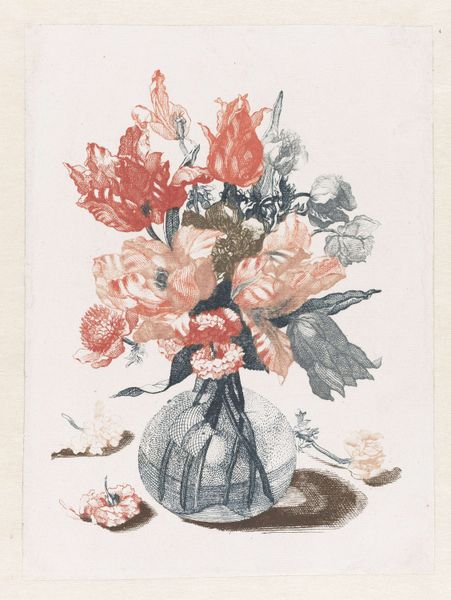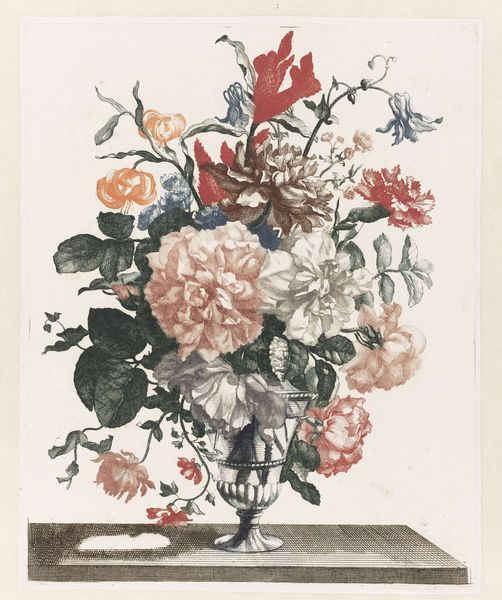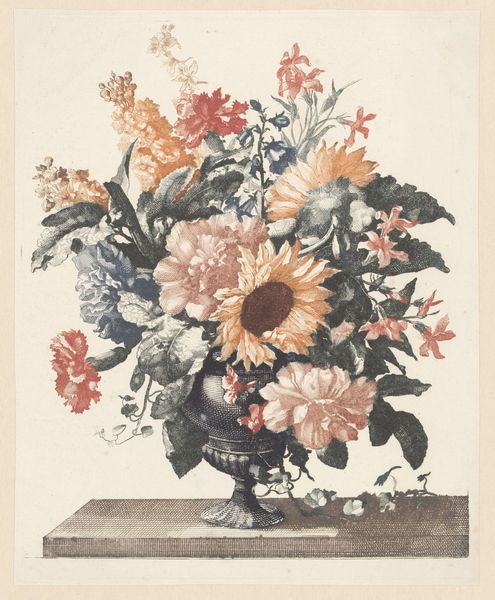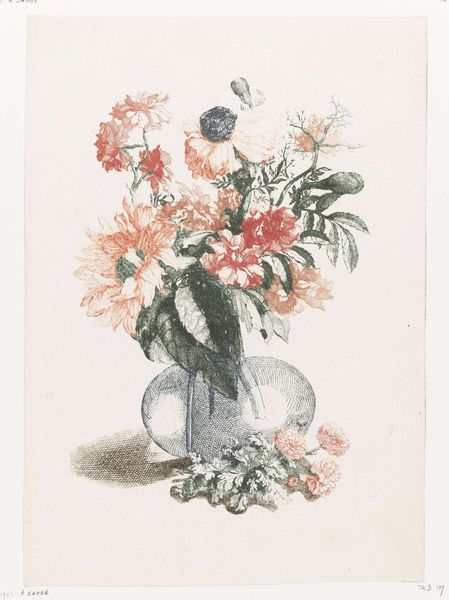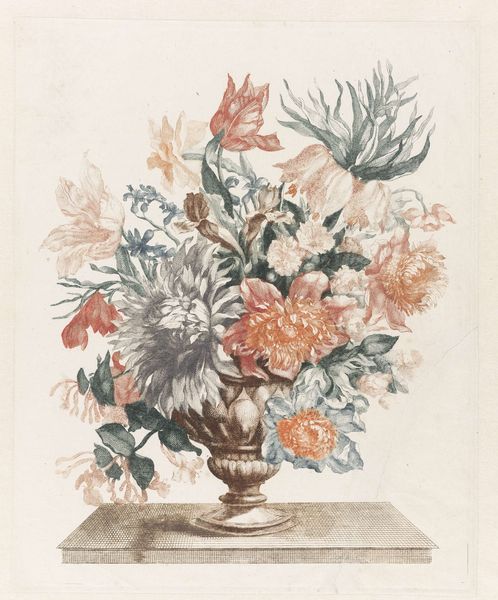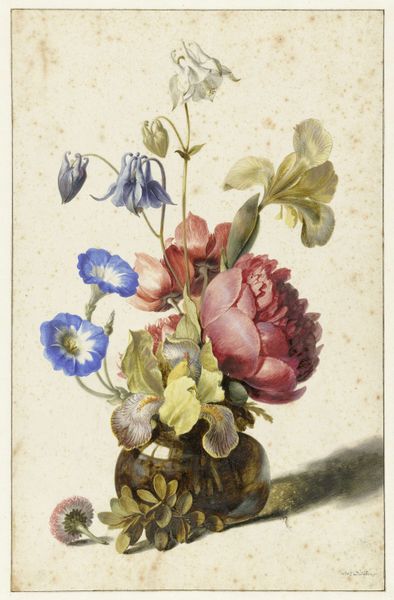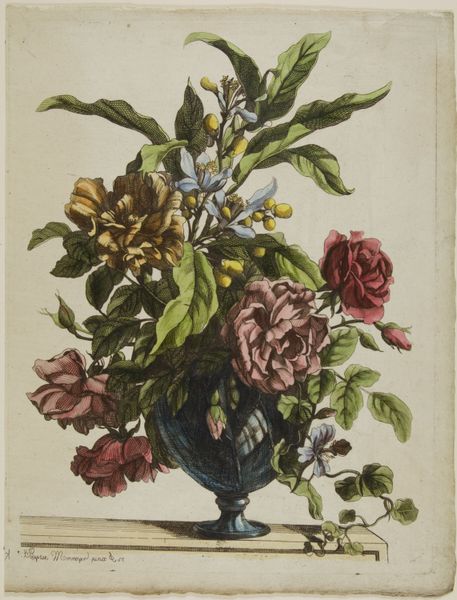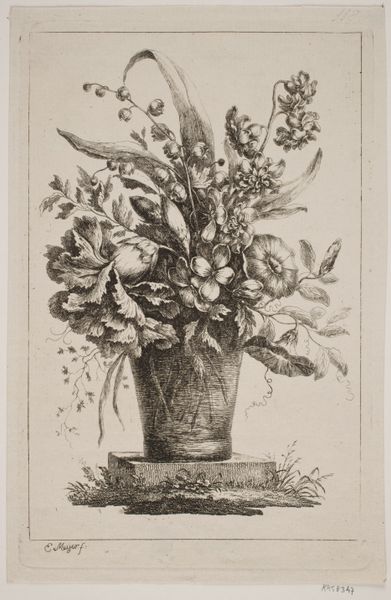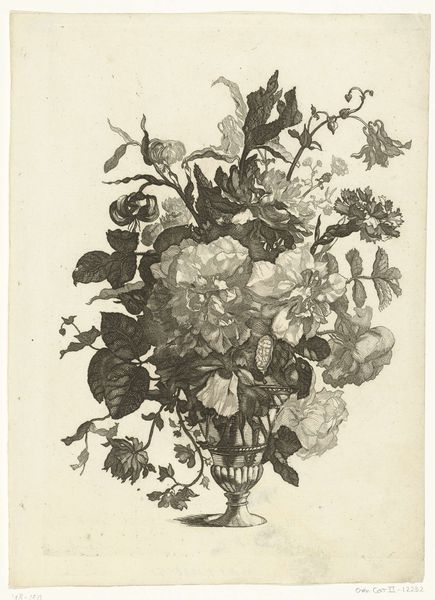
#
landscape illustration sketch
#
light pencil work
#
quirky sketch
#
pencil sketch
#
botanical drawing
#
watercolour bleed
#
watercolour illustration
#
botanical art
#
fantasy sketch
#
watercolor
Dimensions: height 223 mm, width 148 mm
Copyright: Rijks Museum: Open Domain
This print of flowers in glass vases was made by an anonymous artist and is held at the Rijksmuseum. Flower painting flourished in the Netherlands during the 17th and 18th centuries, reflecting the country’s economic expansion and the growth of a wealthy merchant class with a taste for luxury goods. Floral paintings were not just decorative; they also carried symbolic meanings. Certain flowers were associated with particular virtues or ideas, making these images a subtle form of communication. This still life reflects the growing importance of scientific observation and documentation. Botanical illustration became a significant field of study and a source of national pride. To better understand the role of this print, we can consult Dutch inventories and archival records from the period. These sources help us understand the context in which these artworks were created, viewed, and valued. Considering art as part of a broader social and institutional context, and not just aesthetics, gives us insight into the cultural values of the Dutch Golden Age.
Comments
rijksmuseum about 2 years ago
⋮
Johannes Teyler from Nijmegen was educated as a philosopher and mathematician, but also worked later as a military engineer. He invented a method for printing impressions in colour, for which he received a patent in 1688. The colours had to be applied to the copper plate by hand for each individual impression. Because this was very labour intensive, his colour printing process found little following.
Join the conversation
Join millions of artists and users on Artera today and experience the ultimate creative platform.
